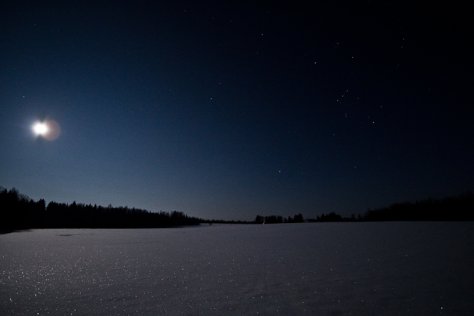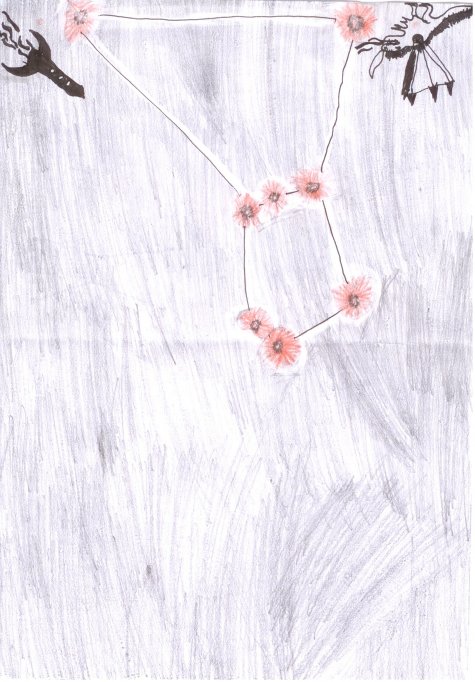The Flail and Rake or Orion shining in the sky
Text: Helen Arusoo, journal Loodusesõber
Drawing: Jesse
Photo: Mats Kangur
Translation: Liis
Flail and Rake and full moon (click to enlarge).
On clear, cold evenings it is possible to study the Orion constellation: it shines so brightly that even in the sea of lights in the capital and with a full moon shining it shows very well. Mats’ photo is taken in the countryside, just a few days ago on Wednesday night, to show those who haven’t managed on their own to find this constellation, held to be one of the most beautiful, in the sky. The moon also shows the dimensions of Orion (to the right in the photo): the constellation is big!
The image of Orion drawn at free hand from memory by a child does not quite include all the stars belonging to the constellation, only the outline of the hunter’s body (actually Orion has a shield in his left hand and a club in the other), but to that there are several explanations. One is that for a beginner precisely this upright "bow tie“ or the hunters body is most noticeable. Another reason is that already for our forefathers these stars wereimportant. They called the Orion the Flail and Rake.
Children today don’t recognize the threshing tool called flail and so they cannot find it in the sky. But surely a rake: the rake is created by the three stars at the hero’s “waist”, and his right “leg”. The flail is made up of the “shoulders“ of Orion and his left “leg“
You might look towards the southern sky around eight o’clock in the evening; surrounding houses (unless they are skyscrapers) should then not disturb an adequate view .










